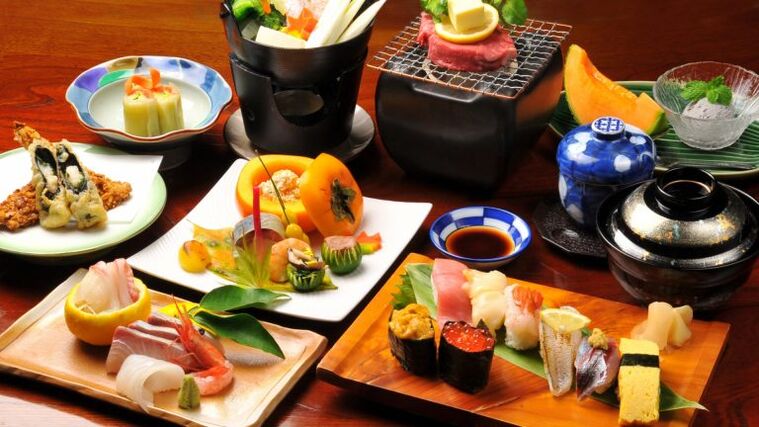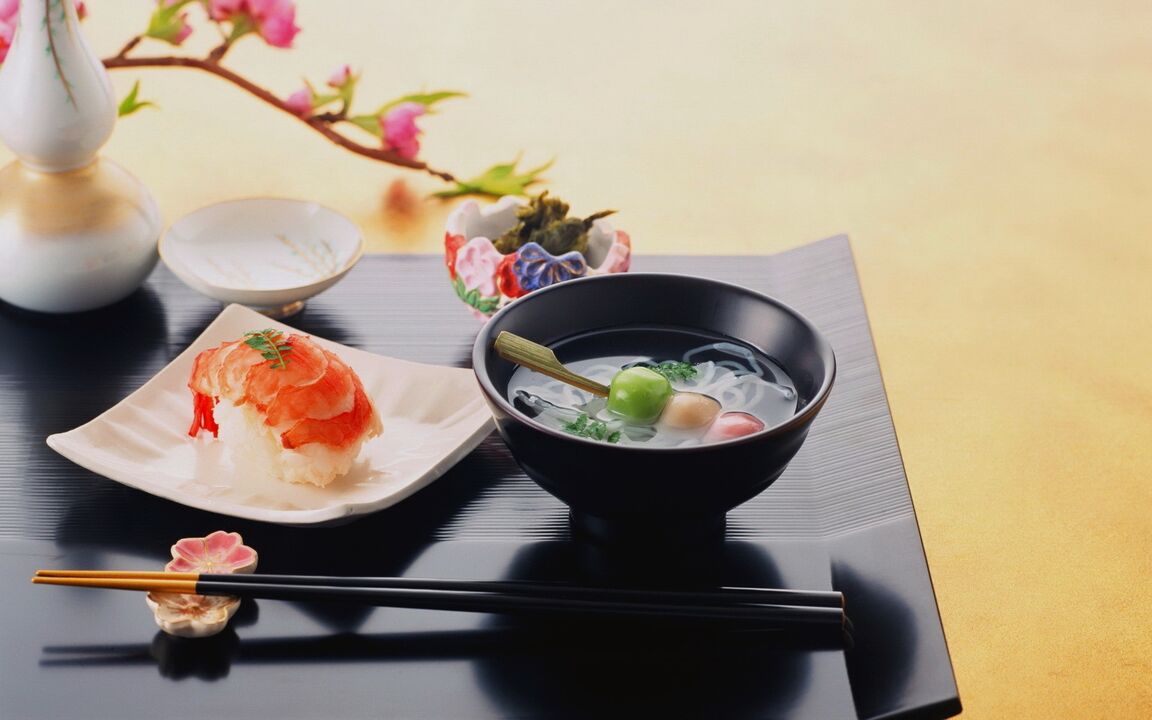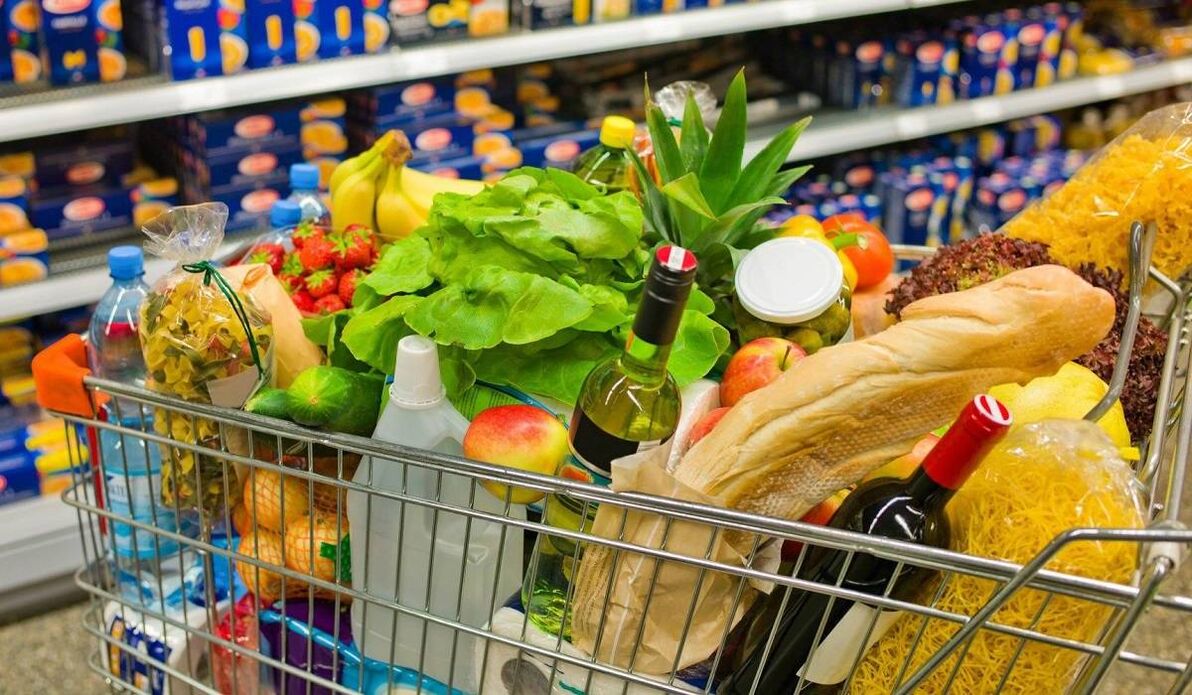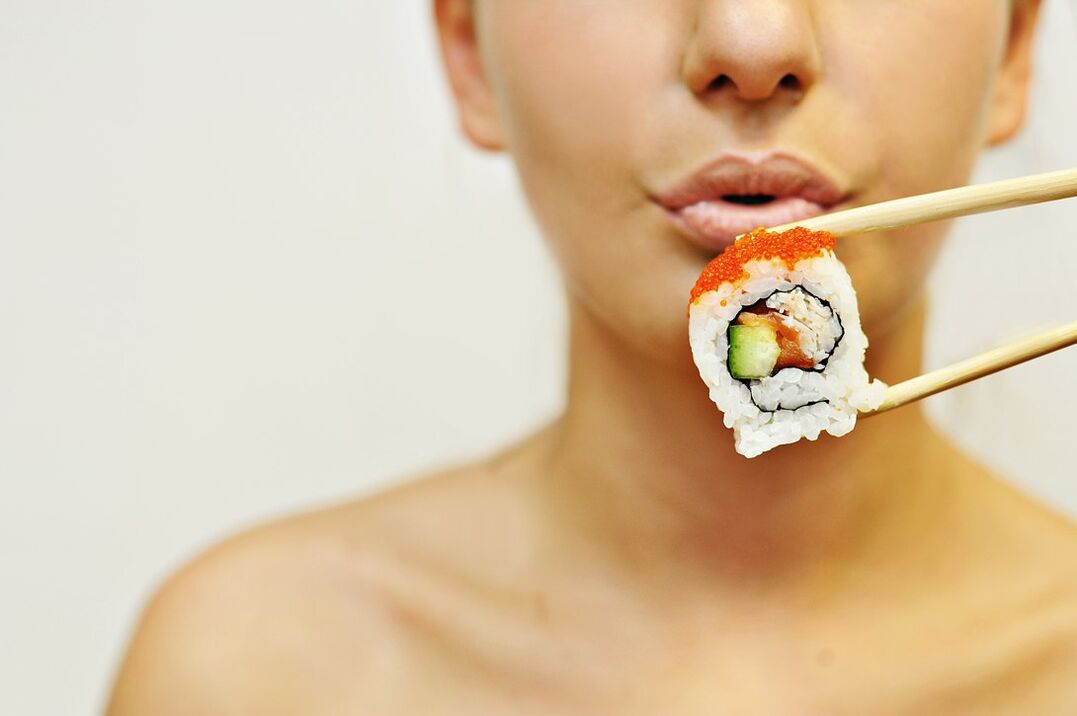The Japanese diet has gained enormous popularity in recent years, combining quick results with benefits for the body at the same time. Also, the main feature of this 2-week meal plan is that it doesn't have a so-called rollback, where everything goes back to the way it was after 2-3 weeks.
Japanese food is becoming more and more popular due to its growing popularity in cafes and restaurants in the country. In almost all cooking today, you can buy rolls or anything you need to prepare yourself. So, what is the Japanese diet for weight loss?

Key Features of the Japanese Diet for 14 Days
Let's take a quick look at what a Japanese weight loss diet is and what principles it is based on:
- The total duration is 14 days;
- Low-carb, low-carb, high-protein foods. requires discipline and stamina;
- Total cost - not more than 2, 000 rubles for the entire cycle;
- The estimated result is 5 to 8 kg;
- Repetitive - not more than twice a year;
- Stability - high, with correct withdrawal from the diet after two weeks, results last long and without rollback;
- Contraindications: pregnancy, breastfeeding, gastrointestinal diseases (ulcer, gastritis, gastroduodenitis, etc. ), kidney and liver diseases. It is also not recommended in the presence of heart problems. Before starting a diet, it is best to consult
Diet in Japan – Hype Trend or Does It Really Work?

The Japanese diet used to be completely foreign. Furthermore, the very concept of a "diet" implies a substantial reduction in food and calories, even starvation. Even with the popularity of this unique meal plan, many people still believe that a 14-day diet in Japan will include sushi, green tea, and of course, rice. However, you shouldn't judge this diet solely by traditional Japanese food, the only thing that will remind you of it in two weeks is sea fish, eggs and green tea - products available in many countries around the world. This is a big advantage of the diet, as the diet will contain familiar foods without any exotic flavors, which can lead to digestive disorders and even allergies.
It is unclear how the Japanese 14-day diet relates to the land of the rising sun. According to some reports, it was developed in a Japanese clinic, and according to others, this nutritional program is credited to Japan for its strict discipline, menu, and effectiveness. However, the origin of this diet does not matter, as it can be very effective and harmless if handled properly and followed.
As with any food, Japanese menus are meant to cut calories in your diet. It is based on traditional Japanese cuisine and is known for not eating greasy food, rich in vegetables and fish. Prominent public figure and nutritionist Naomi Moriyama believes that nutrition is the secret to Japanese women's beauty and slenderness into old age. The key, she says, is low carb and small servings.
According to Naomi's calculations, the Japanese consume 25% fewer calories than people in any other country. For example, all kinds of snacks, even so-called fast food, chips, chocolate bars, fatty candies and even butter are not particularly popular in Japan. Even "street food" is low in calories and low in fat and carbohydrates. Therefore, the menu of Japanese food is completely in line with the country's food culture, traditions and food base.
The right diet to burn fat is a must! But think about what kind of result you want to get in the end? Are you sure that after removing this layer of fat, you will see a toned and strong body? To build muscle and increase sexual performance, you need the right workout! To make it easier for you, we provide ready-made training plan maps!
Concept and main rules of Japanese diet

CIS and Japanese residents have significantly different weights, so the sharp turnaround could be a real test for many. But don't be sad, because the plan is designed for two weeks, after which it may slowly revert to your usual diet and favorite foods.
Protein will be the foundation of your diet and a source of satiety. You can only get it from:
- a fish;
- Egg;
- chicken breast;
- dairy products;
- Lean beef.
Only crackers and a few veggies can serve as carbs. For fat - olive oil. Also, fish and other protein products will contain fats, which will avoid deficiencies. The menus and plans of the Japanese 14-day diet have significant calorie restrictions (especially carbohydrates), which can be a real challenge. Still, it's worth noting that the body adapts quickly to this diet and the second week won't be as difficult.
It's worth noting that healthy fiber is on the menu in adequate amounts. It is found in vegetables and can be eaten almost unlimitedly (only on certain days). This eliminates any gastrointestinal problems and improves digestion. Green tea and coffee are also included in the diet. Not only do they keep you alert and avoid fatigue, but they also provide your body with plenty of antioxidants. The important thing is that the tea is natural, without dyes and flavors, it is better to buy coffee beans and grind them yourself.
By flipping through the menu for this 14-day Japanese diet, you can be sure that all the beneficial substances are present in this nutrition plan, with the main changes affecting portion size and the amount of food eaten. Basically, for most people, two weeks pass without consequences, but if your body is overly reacting to cutting carbs, then you should delay eating and see your doctor. The main symptoms are headache, severe weakness and fatigue.
Drinking regimes are very important. You need to drink plenty of plain water at room temperature. First, it can help improve digestion and make it easier to cope with hunger by simulating satiety. Second, it allows you to remove protein processing products from your body. Another important point is strict adherence to the master plan. If you are serious about trying and checking how to lose weight with the Japanese diet, then you should only eat these foods and eat them in the amount provided each day. Substitutions are not allowed. You also cannot change or reschedule the date.
The only exception is coffee and tea. In the morning, you can have a cup of tea instead of coffee, depending on personal preference. Of course, sugar free. Salt is also a negative factor in the diet, but if you can't cut it down completely, limit yourself to a minimum.
One of the main difficulties, in addition to being low in calories, is also considered to be eating small, frequent meals throughout the day. While other diets include snacks at 5 or even 8 a day, the Japanese diet consists of only 3 meals. It's also worth remembering that you need to start your day with a glass of water, which will "start" your body and metabolic processes. Dinner should be eaten no earlier than 2-3 hours to allow time for the food to digest while you sleep.
This is a strict diet, so a smooth entry is recommended and does not include cutting transitions in the diet. So the body will quickly adapt to the new situation and the diet will be more comfortable. The easiest way to prepare is to completely stop eating fast food at least 3-5 days before starting the diet and reduce the portion size (no more than half the usual serving size). While this regimen may seem rigid, it's perfectly balanced and harmless, but also allows you to lose 5-8kg in just 2 weeks.
Prep period and grocery shopping

You will need:
- Coffee (ground or grain) - 1 packet;
- Natural Green Tea - 1 packet;
- eggs - 20;
- Lean beef (pulp) - 1 kg;
- Sea fish (fish fillets) - 2 kg;
- Chicken slices - 1 kg;
- Extra virgin olive oil - 0. 5 liter;
- carrots - 2-3 kg;
- Cabbage - 2 medium size;
- eggplant or zucchini - 1 kg;
- Fruit (except grapes and bananas) - 1 kg;
- Kefir - 1 l;
- Tomato juice - 1 l;
- Lemons - 2 pcs.
In terms of principles and food lists, the Japanese diet is often compared or even confused with the "chemical diet" - the nutritional plan developed in the United States. Its creator is Osama Hamdiy, whose diet is actively used to treat diabetes and obesity. The Japanese diet also uses the principle of drastic restriction of carbohydrates and increased intake of protein, so that chemical changes in metabolic processes in the body trigger a chain of reactions that lead to drastic weight loss. However, there is an important difference between these meal plans. The Osama Hamdiya system includes an unlimited number of products that allow you to rely on muscle building and intense training. At the same time, Japan's plan has a strict quantitative limit, and the cycle is short, only two weeks. A plus for those who want quick results and can't tire their bodies out for months, avoiding the usual diet.
Detailed menu of daily Japanese food

It is important to take this plan very seriously and follow the recommendations strictly. Any attempt to disrupt the mode or add a product could lead to a worse overall result than expected. The daily menu of the Japanese diet for 14 days is as follows:
Day 1
- Breakfast - plain coffee without milk or sugar;
- Lunch - boiled eggs (2 pieces), boiled cabbage in olive oil, 1 cup tomato juice;
- Dinner - 200g fried or boiled fish.
Day 2
- Breakfast - coffee and 1 slice of rye bread;
- Lunch - 200g fried or boiled fish with boiled cabbage and olive oil;
- Dinner - 100 grams of boiled beef and 1 cup of kefir.
Day 3
- Breakfast - a slice of rye bread (dried in the toaster) or additive-free biscuits. a cup of coffee;
- Lunch – fried eggplant or zucchini in olive oil (any serving size);
- Dinner - boil 200g unsalted beef, fresh cabbage and olive oil, 2 hard boiled eggs.
Day 4
- Breakfast - a fresh baby carrot with the juice of a lemon;
- Lunch - 200g fried or boiled fish, 1 cup tomato juice;
- Dinner - 200g fruit (optional).
Day 5
- Breakfast - a medium carrot and the juice of a whole lemon;
- Lunch - boiled or steamed fish with a glass of tomato juice;
- Dinner - 200g fruit (optional).
Day 6
- Breakfast - a cup of unsweetened coffee;
- Lunch - boiled chicken without salt (500g), fresh carrot and cabbage salad (tossed with olive oil);
- Dinner - one fresh carrot and two hard boiled eggs.
Day 7
- Breakfast - a cup of green tea;
- Lunch - unsalted boiled beef (200g);
- Dinner - Your choice: 200g fruit, 200g boiled beef and a cup of kefir, 200g boiled fish or 2 boiled eggs and salad (carrots dipped in olive oil.
Day 8
- breakfast - a cup of coffee;
- Lunch - 500 g unsalted chicken, cabbage and carrot salad (tossed with olive oil);
- Dinner - 1 baby carrot with olive oil, 2 hard boiled eggs.
Day 9
- Breakfast - a carrot and the juice of a whole lemon;
- Lunch - 200 grams of fried or boiled fish and a glass of tomato juice;
- Dinner - 200g fruit of your choice.
Day 10
- breakfast - a cup of coffee;
- Lunch - 3 small carrots (fried in vegetable oil), 1 egg and 50 grams of cheese;
- Dinner - 200 grams of any fruit.
Day 11
- Breakfast - a cup of coffee and a slice of rye bread;
- Lunch - fry eggplant or zucchini in olive oil (any amount);
- Dinner - 200g boiled beef, fresh cabbage and olive oil, 2 hard boiled eggs.
Day 12
- Breakfast - a cup of coffee and a slice of rye bread;
- Lunch - 200g fried or boiled fish, fresh cabbage and olive oil;
- Dinner - 100 grams of boiled beef and 1 cup of kefir.
Day 13
- breakfast - a cup of coffee;
- Lunch - 2 hard boiled eggs, boiled cabbage in olive oil and 1 cup of tomato juice;
- Dinner - fry 200 g of fish in olive oil.
Day 14
- breakfast - a cup of coffee;
- Lunch - fried or boiled fish, fresh cabbage and olive oil;
- Dinner - 200 grams of boiled beef, 1 cup of kefir.
There is an opinion that this diet will give you the most lasting and consistent results without returning to your usual weight. After losing weight, it is possible to maintain your weight for up to 3 years, but only if you stick to your diet regimen and don't start compensating for everything with high-calorie foods right after day 15. Also, a great solution is to adapt a Japanese meal plan to your daily diet.













































